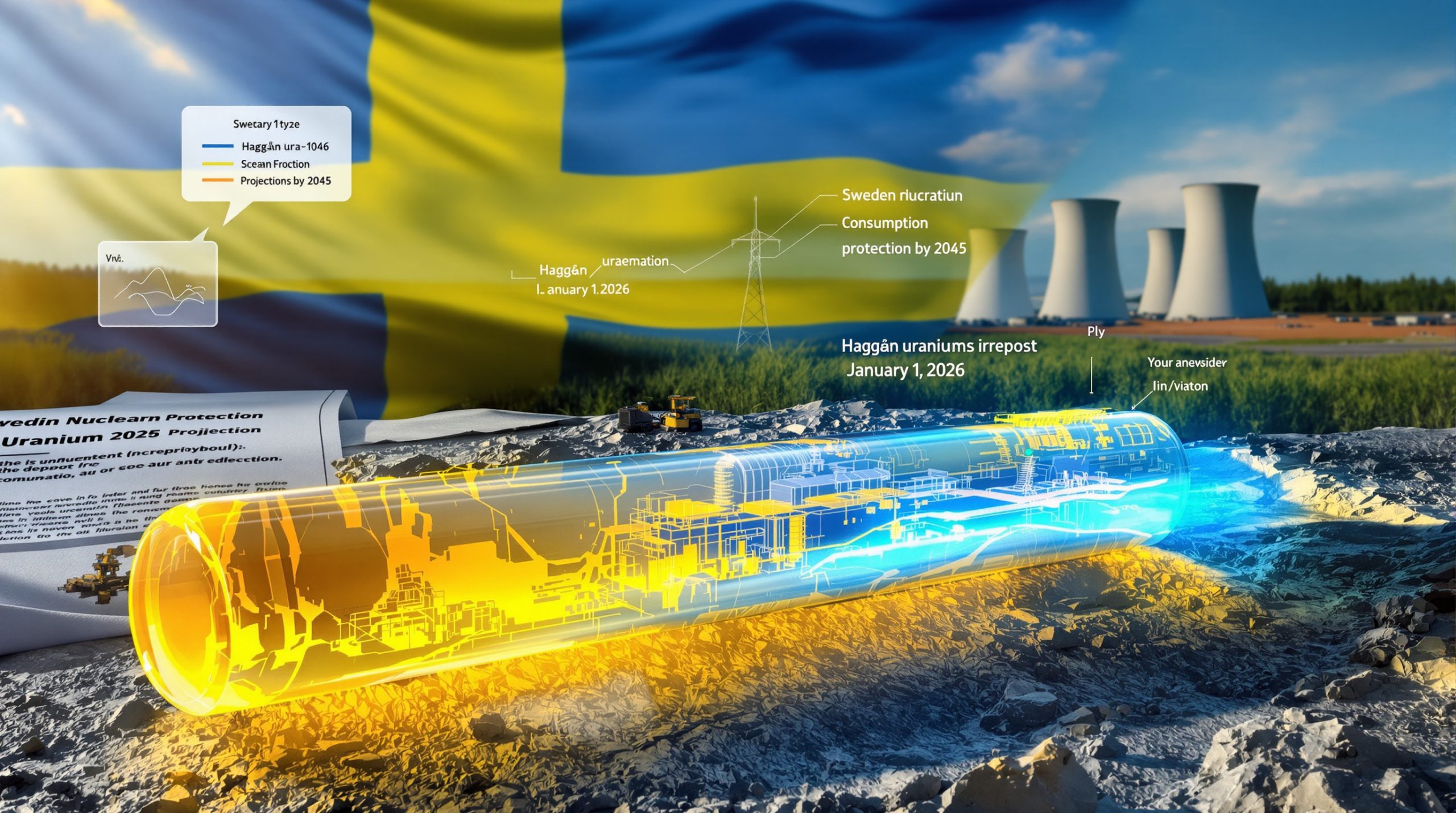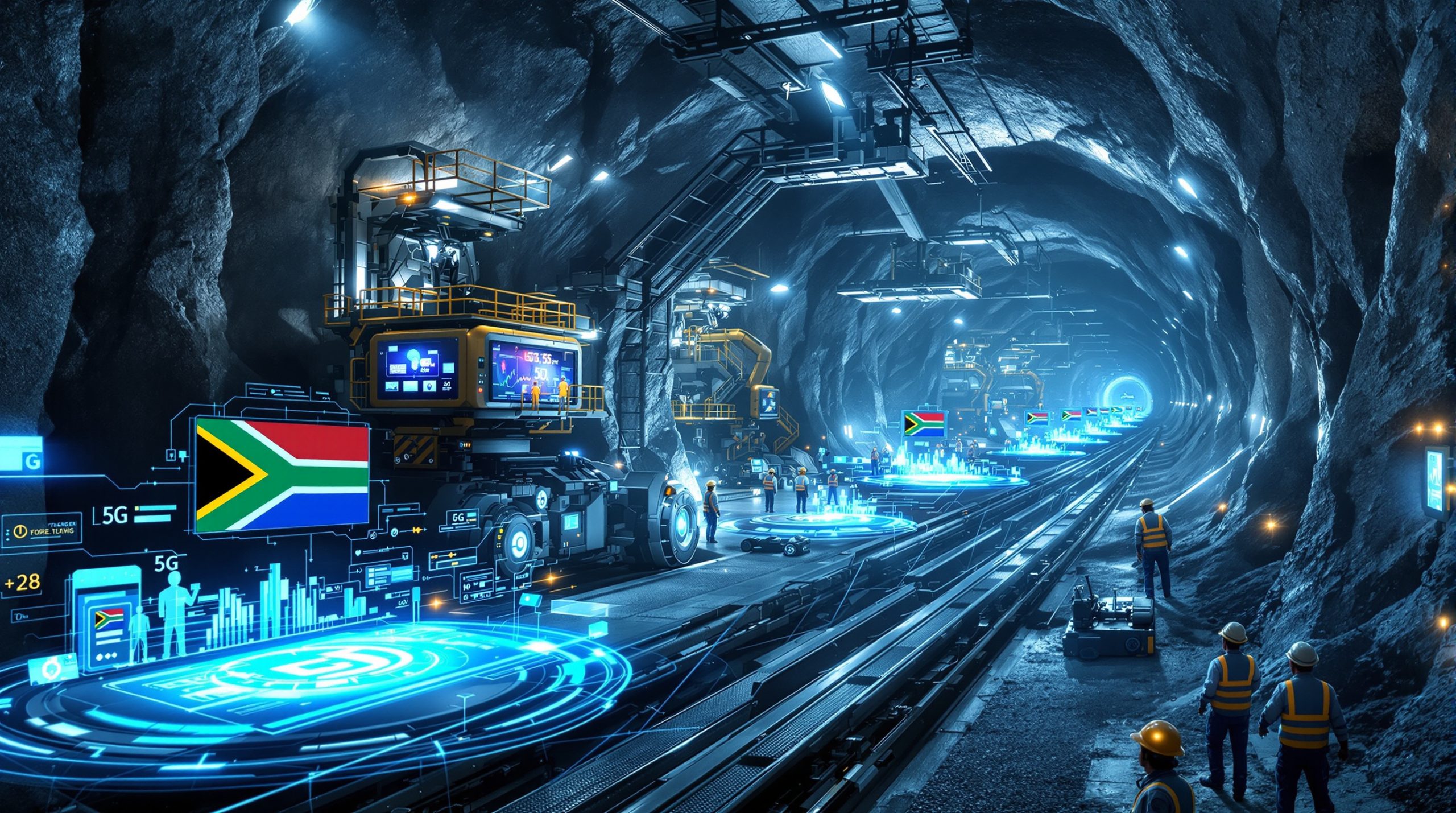Understanding Fortescue's Real Zero Initiative: Beyond Net Zero Commitments
The Evolution from Net Zero to Real Zero
Fortescue's Real Zero initiative represents a paradigm shift in corporate climate strategy that goes beyond conventional Net Zero approaches. While many companies rely on carbon offsets and theoretical carbon capture technologies to balance their emissions, Fortescue has taken a bolder stance by committing to the complete elimination of emissions at their source. This approach emerged from the recognition that traditional climate commitments often lack the ambition and urgency needed to address our escalating climate crisis.
The Real Zero concept fundamentally challenges the status quo by rejecting compromise solutions that allow businesses to continue fossil fuel use while purchasing offsets elsewhere. Instead, it demands authentic transformation of operations and infrastructure to eliminate emissions entirely rather than simply offsetting them on paper.
Key Principles of the Real Zero Framework
The Real Zero framework established by Fortescue is built upon several foundational principles that distinguish it from conventional climate approaches:
- Complete elimination of fossil fuel dependencies across all operational activities
- Rejection of carbon offsets as a primary decarbonization mechanism
- Healthy skepticism toward carbon capture technologies that remain unproven at scale
- Emphasis on measurable, verifiable emissions reductions directly at their source
- Focus on technological innovation to enable genuine zero-emission operations
- Transparent reporting and accountability throughout the transition process
How Does Real Zero Differ from Net Zero Approaches?
The Problem with Carbon Offsets
Traditional Net Zero strategies typically rely heavily on purchasing carbon offsets, allowing companies to continue business-as-usual operations while theoretically balancing their carbon books through external projects. Fortescue's Real Zero initiative highlights several critical limitations of this approach:
| Issues with Carbon Offsets | Real Zero Alternative Approach |
|---|---|
| Verification challenges and credibility concerns | Direct emissions elimination at source |
| Limited additionality – many projects would happen anyway | Technological transformation of core operations |
| Risk of double-counting across multiple reporting entities | Transparent and comprehensive emissions accounting |
| Enables delayed climate action and continued pollution | Immediate operational changes and infrastructure investments |
| Perpetuates fossil fuel dependence | Complete fossil fuel phase-out with tangible milestones |
| Deflects responsibility to external parties | Internal accountability for emissions |
In September 2024, Fortescue demonstrated its commitment to this principle by converting approximately two-thirds of its vehicle fleet to electric power, showing tangible progress rather than relying on offsetting mechanisms.
Carbon Capture: Promise vs. Reality
While carbon capture and storage (CCS) technologies feature prominently in many Net Zero roadmaps, the Real Zero initiative takes a more pragmatic view of their limitations:
- Scale challenges: Current global CCS deployment captures only a tiny fraction of annual emissions, with implementation lagging far behind climate targets
- Economic barriers: The high costs of capture, transport, and storage make widespread implementation economically prohibitive without massive subsidies
- Energy intensity: Many CCS approaches require significant energy inputs, creating efficiency losses that compound the challenge
- Implementation timeline: Development and deployment timelines are incompatible with urgent climate action needs
- Infrastructure requirements: Vast new infrastructure networks would be needed for transportation and storage
- Technical uncertainties: Permanent storage solutions face geological uncertainties and potential leakage risks
Fortescue has explicitly characterized carbon capture as "practically unproven to work" at the scale needed to address climate challenges, pushing companies to focus instead on eliminating emissions at their source.
What Are Fortescue's Implementation Strategies?
Electrification of Mining Operations
Fortescue has made substantial progress in transforming its mining operations through strategic electrification in mining initiatives:
- Conversion of approximately two-thirds of its vehicle fleet to electric power by September 2024
- Development and deployment of battery electric haul trucks and mobile equipment to eliminate diesel consumption
- Implementation of renewable energy infrastructure to power mining operations without fossil fuels
- Pilot projects demonstrating the technical and economic viability of zero-emission mining practices
- Operational adjustments to maximize efficiency and minimize energy requirements
These practical steps demonstrate that Real Zero isn't merely an aspirational concept but an actionable business strategy with tangible implementation pathways.
Green Hydrogen and Renewable Energy Integration
A cornerstone of Fortescue's Real Zero strategy involves comprehensive energy transformation:
- Significant investments in green hydrogen production capabilities to replace fossil fuels in high-heat industrial processes
- Development of renewable energy infrastructure including solar, wind, and battery storage to power operations
- Research initiatives exploring hydrogen applications for industrial processes that are difficult to electrify directly
- Exploration of ammonia as a hydrogen carrier for efficient energy storage and transport
- Integration of intelligent energy management systems to optimize renewable resource utilization
Despite a challenging financial year with profits falling approximately 40% due to commodity price pressures, Fortescue has maintained its commitment to green energy initiatives, underscoring the strategic importance of this transition beyond short-term financial considerations.
Supply Chain Transformation
The Real Zero initiative extends beyond Fortescue's direct operations to encompass its entire value chain:
- Engagement with suppliers on emissions reduction targets and implementation pathways
- Development and sourcing of low-carbon materials and inputs to minimize embodied carbon
- Collaboration with shipping and logistics partners on zero-emission transport solutions
- Financial incentives and contractual requirements for contractors to adopt Real Zero principles
- Supply chain transparency initiatives to enable comprehensive emissions tracking and reduction
This comprehensive approach acknowledges that truly meaningful climate action must address Scope 3 emissions across the entire value chain, aligning with new regulatory requirements that the Australian Securities and Investments Commission has described as "the biggest change to corporate reporting in a generation."
What Business Benefits Does Real Zero Offer?
Competitive Advantages in a Decarbonizing Economy
Companies adopting Real Zero principles may secure several strategic advantages in an increasingly carbon-constrained business environment:
- First-mover benefits: Early adopters can shape industry standards, develop proprietary solutions, and establish market leadership
- Risk mitigation: Reduced exposure to future carbon pricing mechanisms, regulatory changes, and stranded asset risks
- Brand differentiation: Enhanced reputation among environmentally conscious customers, partners, and stakeholders
- Innovation catalyst: Accelerated development of proprietary clean technologies with potential commercial applications
- Investor appeal: Alignment with growing ESG investment criteria and reduced climate risk exposure
- Operational resilience: Decreased vulnerability to fossil fuel price volatility and supply disruptions
Despite a 40% profit decline in FY25, Fortescue's stock maintained relative stability at $19.59 per share, suggesting investor confidence in the company's long-term strategic direction despite short-term financial headwinds.
Financial Implications of Real Zero vs. Net Zero
The financial considerations of pursuing Real Zero rather than traditional Net Zero approaches include:
| Financial Aspect | Short-term Impact | Long-term Potential |
|---|---|---|
| Capital expenditure | Higher initial investment requirements | Lower operational costs and reduced compliance expenses |
| Energy costs | Transition expenses during implementation | Reduced exposure to fossil fuel price volatility |
| Carbon pricing risk | Minimal exposure to future carbon taxes | Significant competitive advantage as pricing mechanisms mature |
| Technology development | R&D investment required for innovative solutions | Potential for new revenue streams from proprietary technologies |
| Investor sentiment | Mixed reactions depending on time horizon | Increasingly positive as climate concerns intensify |
| Financing costs | Potential access to green financing instruments | Preferential lending terms and reduced cost of capital |
Fortescue's dividend reduction from 80 cents to 60 cents in FY25 reflects the financial realities of this transition period, balancing short-term returns with long-term strategic investments in decarbonization.
How Is Fortescue Measuring and Reporting Progress?
Key Performance Indicators
Fortescue has established specific metrics to track its Real Zero journey with transparency and accountability:
- Absolute greenhouse gas emissions across Scope 1, 2, and 3 categories
- Percentage of operations powered by renewable energy sources
- Fossil fuel consumption reduction across different operational segments
- Electric vehicles in mining adoption rates throughout the fleet
- Green hydrogen production capacity development
- Energy efficiency improvements across mining and processing activities
- Carbon intensity per ton of product produced
These metrics provide stakeholders with clear visibility into the company's progress while creating internal accountability mechanisms for implementation teams.
Transparency and Accountability Mechanisms
The initiative emphasizes rigorous reporting practices to ensure credibility:
- Regular public disclosure of emissions data with third-party verification
- Integration of climate metrics into executive compensation structures
- Stakeholder engagement processes to gather feedback on climate strategy
- Alignment with emerging climate disclosure frameworks and standards
- Transparent reporting on both successes and challenges encountered
- Clear articulation of methodologies used for emissions calculation
This approach aligns with the mandatory Scope 3 emissions reporting requirements implemented in 2024, which ASIC described as "the biggest change to corporate reporting in a generation." However, as The Market Online noted, these requirements have had "minimal impact on FY25 earnings season" across the broader market, highlighting Fortescue's leadership in proactively embracing comprehensive climate accounting.
What Challenges Face the Real Zero Initiative?
Technical and Operational Hurdles
The path to Real Zero confronts several significant technical challenges:
- Infrastructure limitations: The need for massive renewable energy deployment to power operations
- Technology readiness: Some zero-emission solutions for specific industrial processes remain in development
- Scale requirements: Unprecedented industrial transformation needed across complex operational systems
- System integration: Complexity of coordinating multiple clean technologies into cohesive operations
- Geographic constraints: Varying renewable resource availability across diverse operational locations
- Hydrogen infrastructure: Traditional pipelines cannot efficiently transport hydrogen gas, requiring new solutions
These challenges require significant innovation and investment to overcome, but they also create opportunities for companies to develop proprietary solutions with potential commercial applications.
Economic and Market Barriers
Implementation also confronts economic realities in competitive markets:
- Higher short-term costs compared to conventional operations using established fossil fuel infrastructure
- Competition with companies pursuing less ambitious climate strategies with lower immediate costs
- Market uncertainty regarding future policy environments and carbon pricing mechanisms
- Supply chain dependencies for critical minerals and components needed for clean energy technologies
- Potential resistance from traditional industry stakeholders and established business models
- Capital allocation challenges during commodity price downturns, as evidenced by Fortescue's 40% profit decline
Despite these challenges, Fortescue's maintained commitment to its decarbonization strategy through financial headwinds demonstrates the strategic importance the company places on long-term transformation beyond quarterly results.
How Can Other Companies Adopt Real Zero Principles?
Assessment and Planning Framework
Organizations interested in pursuing Real Zero can follow a structured approach to implementation:
- Comprehensive emissions inventory: Document all direct and indirect emissions sources across operations
- Technology assessment: Evaluate available zero-emission alternatives for each emissions source
- Roadmap development: Create phased implementation plans with clear milestones and responsibilities
- Financial modeling: Analyze investment requirements, operational impacts, and potential returns
- Stakeholder engagement: Build support among investors, employees, customers, and partners
- Pilot projects: Test and refine solutions before full-scale deployment
- Supply chain engagement: Collaborate with suppliers on emissions reduction initiatives
- Reporting framework: Establish transparent measurement and disclosure mechanisms
This systematic approach allows companies to develop tailored Real Zero strategies appropriate to their specific operational contexts and capabilities.
Industry-Specific Implementation Strategies
The Real Zero concept can be adapted across diverse sectors with industry-specific approaches:
- Manufacturing: Electrification of processes, green hydrogen for high-heat applications, material efficiency improvements
- Transportation: Battery electric vehicles for light-duty applications, hydrogen fuel cells for heavy transport, operational optimization
- Construction: Low-carbon materials, electric equipment, passive design principles, circular material flows
- Agriculture: Regenerative practices, electrified equipment, precision application technologies, biofuel alternatives
- Services: Renewable-powered facilities, sustainable procurement policies, digitalization to reduce physical resource needs
- Mining: Fleet electrification (as demonstrated by Fortescue), renewable energy integration, process efficiency improvements
These sector-specific strategies demonstrate that Real Zero principles can be applied across the economy, though implementation details will necessarily vary based on technical requirements and operational realities.
What Is the Broader Impact on Climate Policy and Corporate Responsibility?
Influencing Corporate Climate Standards
Fortescue's initiative may reshape corporate climate action by:
- Challenging the adequacy of conventional Net Zero commitments that rely heavily on offsets
- Establishing new benchmarks for corporate climate leadership beyond incremental improvements
- Demonstrating the technical and economic feasibility of deep decarbonization in resource-intensive sectors
- Creating competitive pressure for more ambitious industry standards and practices
- Providing a template for meaningful climate action that goes beyond offsetting and theoretical solutions
By publicly advocating for Australian businesses to abandon the term "Net Zero" in favor of "Real Zero," Fortescue is actively attempting to reshape the corporate climate discourse and elevate standards for climate commitments.
Policy Implications and Advocacy
The Real Zero framework has significant potential policy implications:
- Support for stronger regulatory frameworks on emissions across economic sectors
- Advocacy for effective carbon pricing mechanisms that incentivize direct emissions reduction
- Promotion of renewable energy incentives and infrastructure development
- Opposition to continued subsidies for fossil fuel industries and technologies
- Engagement with international climate negotiations to strengthen global commitments
The mandatory Scope 3 emissions reporting requirements implemented in 2024 represent a step toward greater transparency, though their limited impact on FY25 earnings reports suggests further policy development may be needed to drive meaningful change across the broader market.
What Does the Future Hold for Real Zero?
Evolution of the Initiative
The Real Zero concept is likely to develop in several directions as implementation progresses:
- Expansion to address broader environmental impacts beyond carbon emissions
- Integration with circular economy principles to minimize resource extraction and waste
- Development of industry-specific Real Zero standards and certification frameworks
- Creation of collaborative platforms for technology sharing and best practices
- Establishment of Real Zero supply chain certification programs and standards
- Refinement of methodologies as implementation experience grows
This evolution will likely respond to implementation challenges, technological developments, and stakeholder feedback as the initiative matures.
Long-term Vision and Transformative Potential
The ultimate ambition of Real Zero extends beyond individual corporate commitments to drive systemic change:
- Catalyzing system-wide industrial transformation across economic sectors
- Accelerating the transition to a renewable energy economy at global scale
- Demonstrating viable pathways for deep decarbonization in challenging industries
- Redefining corporate responsibility for climate action with heightened ambition
- Creating new economic opportunities through clean technology innovation
- Establishing new paradigms for business leadership in addressing energy transition challenges
Disclaimer: This article contains forward-looking statements and predictions about market trends, technological developments, and business strategies. These statements are based on current information and beliefs but involve risks and uncertainties that could cause actual results to differ materially from those projected. Readers should conduct their own research and consult appropriate financial advisors before making investment decisions based on this information.
Frequently Asked Questions About the Real Zero Initiative
Is Real Zero economically viable for most businesses?
While Real Zero requires significant upfront investment, declining renewable energy costs and increasing carbon risks are improving the economic case. The viability varies by industry, with some sectors facing greater technical challenges than others. Fortescue's continued commitment despite a 40% profit decline demonstrates a strategic prioritization of long-term transformation over short-term financial optimization.
How does Real Zero address scope 3 emissions?
The Real Zero approach emphasizes addressing emissions across the entire value chain, including those from suppliers and customers. This comprehensive scope distinguishes it from narrower climate commitments focused only on direct operations. The approach aligns with the mandatory Scope 3 emissions reporting requirements implemented in 2024, described by ASIC as "the biggest change to corporate reporting in a generation."
What timeframe is realistic for achieving Real Zero?
Implementation timelines vary based on industry complexity, technological readiness, and organizational commitment. Fortescue has demonstrated meaningful progress with approximately two-thirds of its vehicle fleet converted to electric power by September 2024, showing that significant transitions can be achieved within operational timeframes when properly prioritized and resourced.
How does Real Zero compare to science-based climate targets?
Real Zero potentially exceeds typical science-based targets by focusing on complete elimination of emissions rather than reduction to levels consistent with specific temperature goals. This approach addresses uncertainties in climate models and carbon budgets by aiming for zero emissions rather than "acceptable" levels of continued pollution.
What role does policy support play in enabling Real Zero transitions?
While Fortescue is pursuing Real Zero regardless of policy environments, supportive government frameworks—including carbon pricing, renewable energy incentives, and research funding—can accelerate adoption across industries. The implementation of mandatory Scope 3 emissions reporting represents a step toward greater transparency, though its limited initial impact suggests further mining industry innovation and mining decarbonisation trends may be needed.
Looking to Invest in the Next Big Mineral Discovery?
Discover how significant mineral finds have historically generated substantial returns by visiting Discovery Alert's dedicated discoveries page, where real-time alerts powered by the proprietary Discovery IQ model transform complex mineral data into actionable investment opportunities for both short-term traders and long-term investors.




